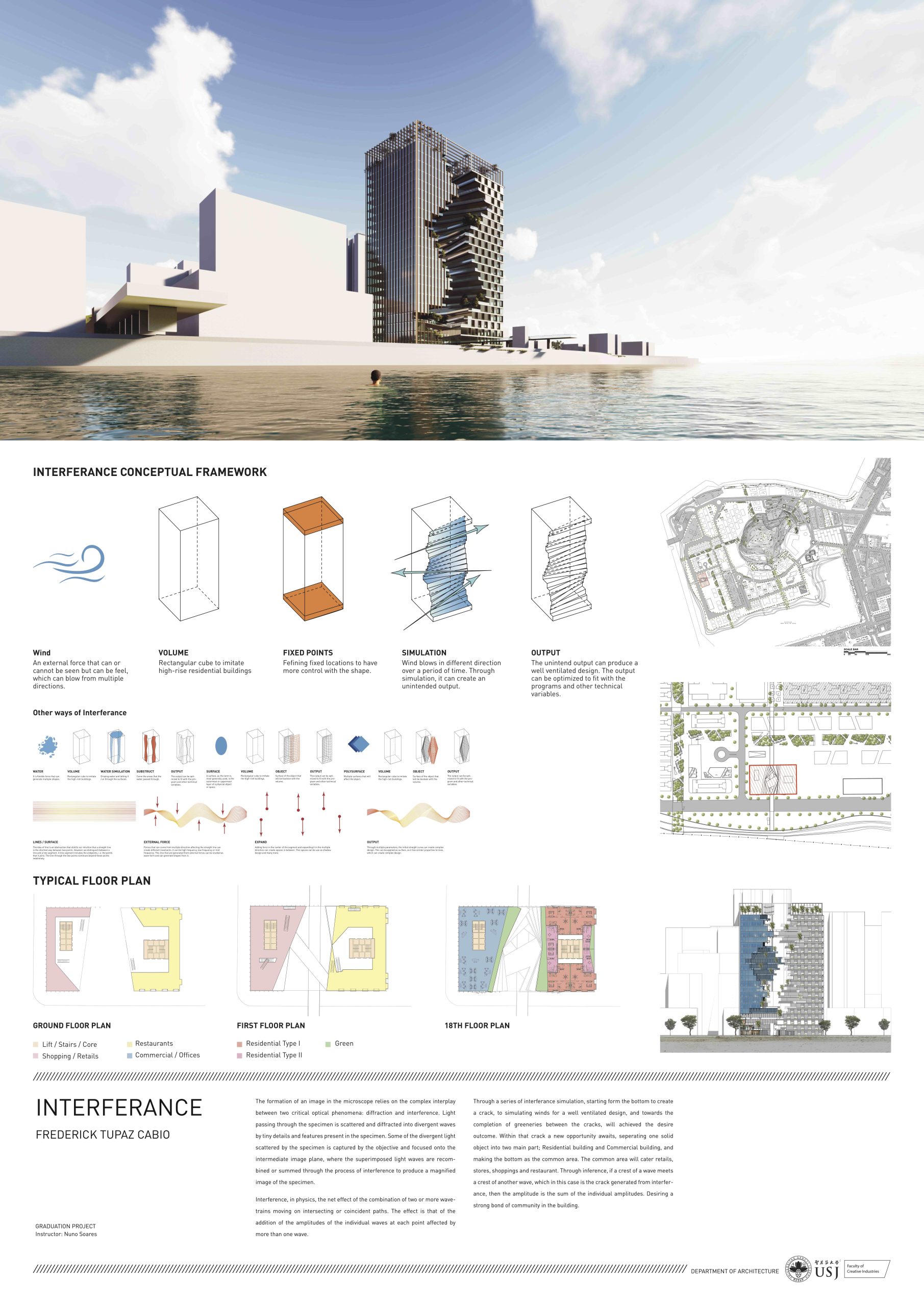Three USJ’s Architecture Graduation Projects Selected by AAM to Represent Macao in the ARCASIA Student’s Architectural Design Award 2020

Three USJ’s Architecture Graduation Projects Selected by AAM to Represent Macao in the ARCASIA Student's Architectural Design Award 2020
15
Oct
15/10/2020
This year, all the AAM’s selected projects to the ARCASIA Students’ Design Awards are from University of Saint Joseph’s (USJ) Architecture graduation students.
Every year, ARCASIA Member Institutes select the three best architecture student projects to represent their country at the ARCASIA Students’ Design Awards. This year’s selected projects by the Architects Association of Macau (AAM), ARCASIA’s Member Institute representing the territory, are all from University of Saint Joseph’s (USJ) Architecture graduation students.
The competition will gather the best architecture student projects from twenty-one Asian countries, providing an opportunity for schools of architecture in ARCASIA member countries and their students to exchange and share ideas on a particular design issue that is raised by ARCASIA every year. This year’s theme is “Resilience by Design”.
The best architecture students projects selected by AAM are:
Interference by Frederick Cabio
Green Unit Scapes by Ida Lei
Floating Library by Isaac Ho
About USJ’s Architecture Programmes:
The University of Saint Joseph’s (USJ) Architecture Programmes—Bachelor of Architectural Studies and Master of Architecture—are designed to empower a new generation of architects committed to improving the built environment and leading through meaningful design innovation. They provide students with a holistic education, enabling them with creative abilities, a cultural background, technical skills, and professional knowledge to pursue an impactful career in architecture, both in Macao and internationally. With an idealistic yet pragmatic approach, the USJ architecture programmes follow international architectural education standards while exploring specific local conditions, looking to Macao and the Greater Bay Area as a laboratory for students to test new spatial answers to contemporary challenges and opportunities. The curricula are rooted in tectonics and sustainability, addressing themes such as high-density housing, heritage management and conservation, experimental material fabrication, and innovative mixed-use architecture.
The programmes emphasise ethics and expertise, encouraging students to be socially committed and generous and to design for the common good.
Students are challenged to generate innovative architectural and urban forms created from a public perspective that contribute to cities and their citizens’ futures by improving the design of the daily spaces where human activities occur.













